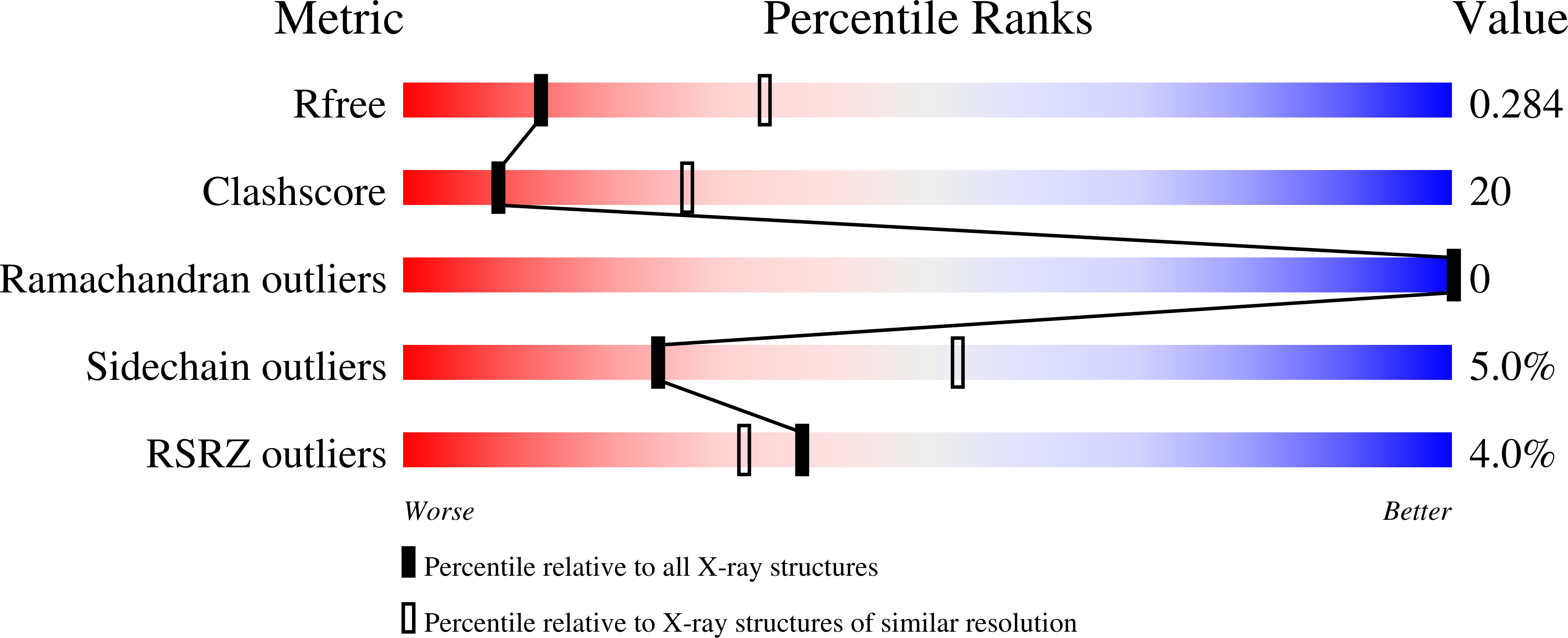Formation and dimerization of the phosphodiesterase active site of the Pseudomonas aeruginosa MorA, a bi-functional c-di-GMP regulator.
Phippen, C.W., Mikolajek, H., Schlaefli, H.G., Keevil, C.W., Webb, J.S., Tews, I.(2014) FEBS Lett 588: 4631-4636
- PubMed: 25447517
- DOI: https://doi.org/10.1016/j.febslet.2014.11.002
- Primary Citation of Related Structures:
4RNF, 4RNH, 4RNI, 4RNJ - PubMed Abstract:
Diguanylate cyclases (DGC) and phosphodiesterases (PDE), respectively synthesise and hydrolyse the secondary messenger cyclic dimeric GMP (c-di-GMP), and both activities are often found in a single protein. Intracellular c-di-GMP levels in turn regulate bacterial motility, virulence and biofilm formation. We report the first structure of a tandem DGC-PDE fragment, in which the catalytic domains are shown to be active. Two phosphodiesterase states are distinguished by active site formation. The structures, in the presence or absence of c-di-GMP, suggest that dimerisation and binding pocket formation are linked, with dimerisation being required for catalytic activity. An understanding of PDE activation is important, as biofilm dispersal via c-di-GMP hydrolysis has therapeutic effects on chronic infections.
Organizational Affiliation:
Centre for Biological Sciences and Institute for Life Sciences, Life Sciences Building B85, The University of Southampton, University Rd, Southampton, Hampshire, SO17 1BJ, United Kingdom.
















